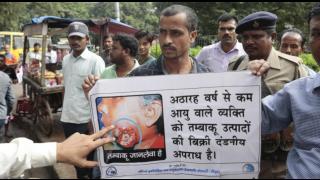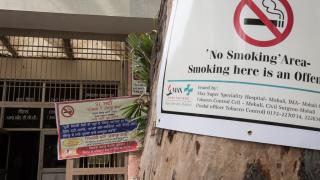
GOAL: Monitoring and evaluation strategy that measures effectiveness of enforcement and a priority-driven research agenda for tobacco control legislation
Prior to implementation, a plan should be developed to monitor progress and evaluate impact. The plan should be accurate, effective, and feasible. Additionally, it should follow a logic model that identifies goals of implementation, inputs, outputs, and key indicators of success over the course of implementation. An effective monitoring and evaluation strategy will help smooth implementation efforts and provide evidence of compliance.
Why Measure Compliance?
A protected population is the goal of implementing tobacco control legislation. Compliance can be measured using simple tools and will result in both programme and implementation data.
This data can be used:
- during implementation to identify gaps and strengthen enforcement efforts
- for transparency and accountability of the government
- for post-implementation evaluation to identify successes and challenges
- as part of officers’ performance evaluations
- to inform the government, media, public and other stakeholders on progress against the implementation strategy
Monitoring and evaluation is a cyclical process and disseminating the results should create a feedback loop to policy makers, regulators, and enforcers to improve strategies, strengthen legislation and as performance reporting to facilitate next steps.
How to measure compliance
There are many ways to approach measuring compliance depending on the policy area, time, resources available, and local context. The type of efforts employed should measure indicators identified while building the monitoring and evaluation plan.
Examples of compliance data collection efforts include:
- Surveys
- Mobile app reporting
- Volunteers or crowdsourcing
- Enforcement drives by trained officers
Prior to starting data collection, it is important to make sure the data collectors are trained and knowledgeable on the legislation, indicators, how to record incidents, and enforcement procedures for data collectors with enforcing authority.
Materials that can assist in successful data collection after or in place of training are:
Guides – Guides are an effective way to give enforcement officers consistent enforcement and compliance information, which assists in effectively and efficiently measuring compliance rates. Guides should include an overview of the legislation, inspection guidance, violation identification, enforcement actions, and assessment of compliance.
Protocols – Protocols, like guides, give guidance on enforcement actions but provide more detailed steps to specific inspection or enforcement elements.
featured resources
CDC Indicators for Eliminating Exposure to Secondhand Smoke, 2017
This report is the third in the CDC's publications on Evaluating Comprehensive Tobacco Control Programs and provides an evaluation logic model and set out outcome indicators that address eliminating exposure to secondhand smoke.
Assessing Compliance with Smokefree Laws 2nd Edition
This guide promotes best practice for conducting studies of compliance with smoke-free laws, including the rationale for doing or not doing a study, the knowledge and resources needed, and how to design the study and effectively disseminate the results. Available in English and Spanish.
FDA Compliance and Enforcement Report
Report on the last five years of the FDA Center for Tobacco Products Office compliance and enforcement activities.







